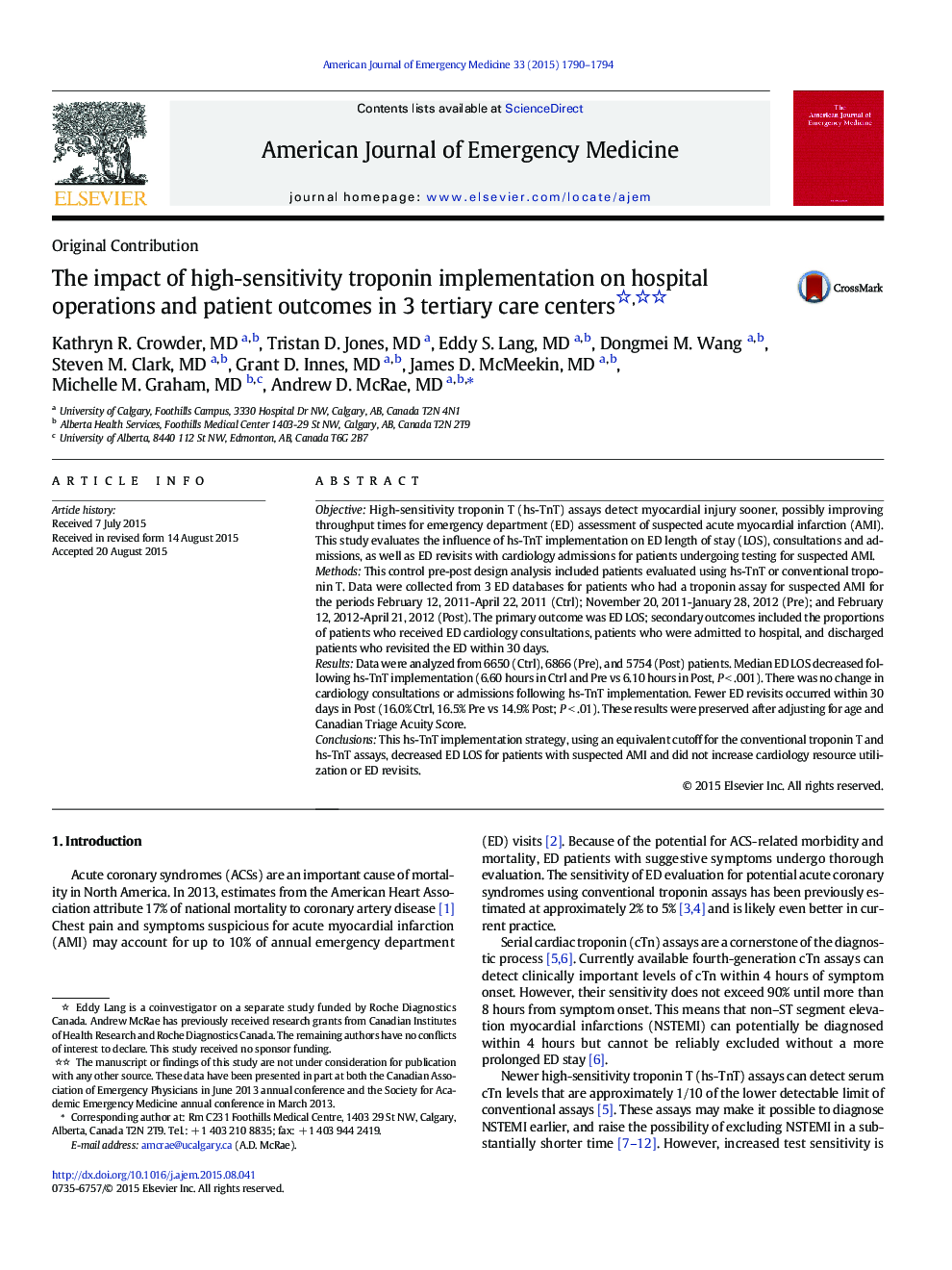| Article ID | Journal | Published Year | Pages | File Type |
|---|---|---|---|---|
| 3223531 | The American Journal of Emergency Medicine | 2015 | 5 Pages |
ObjectiveHigh-sensitivity troponin T (hs-TnT) assays detect myocardial injury sooner, possibly improving throughput times for emergency department (ED) assessment of suspected acute myocardial infarction (AMI). This study evaluates the influence of hs-TnT implementation on ED length of stay (LOS), consultations and admissions, as well as ED revisits with cardiology admissions for patients undergoing testing for suspected AMI.MethodsThis control pre-post design analysis included patients evaluated using hs-TnT or conventional troponin T. Data were collected from 3 ED databases for patients who had a troponin assay for suspected AMI for the periods February 12, 2011-April 22, 2011 (Ctrl); November 20, 2011-January 28, 2012 (Pre); and February 12, 2012-April 21, 2012 (Post). The primary outcome was ED LOS; secondary outcomes included the proportions of patients who received ED cardiology consultations, patients who were admitted to hospital, and discharged patients who revisited the ED within 30 days.ResultsData were analyzed from 6650 (Ctrl), 6866 (Pre), and 5754 (Post) patients. Median ED LOS decreased following hs-TnT implementation (6.60 hours in Ctrl and Pre vs 6.10 hours in Post, P < .001). There was no change in cardiology consultations or admissions following hs-TnT implementation. Fewer ED revisits occurred within 30 days in Post (16.0% Ctrl, 16.5% Pre vs 14.9% Post; P < .01). These results were preserved after adjusting for age and Canadian Triage Acuity Score.ConclusionsThis hs-TnT implementation strategy, using an equivalent cutoff for the conventional troponin T and hs-TnT assays, decreased ED LOS for patients with suspected AMI and did not increase cardiology resource utilization or ED revisits.
